Vietnamese egg roll, or chả giò, is made with a mixture of ground pork, shrimps, bean thread noodles, wood ear mushrooms, taro, carrots, and onion wrapped with spring roll wrappers. It's deep fried until golden and crispy and often enjoyed with Nước chấm (Vietnamese dipping sauce).
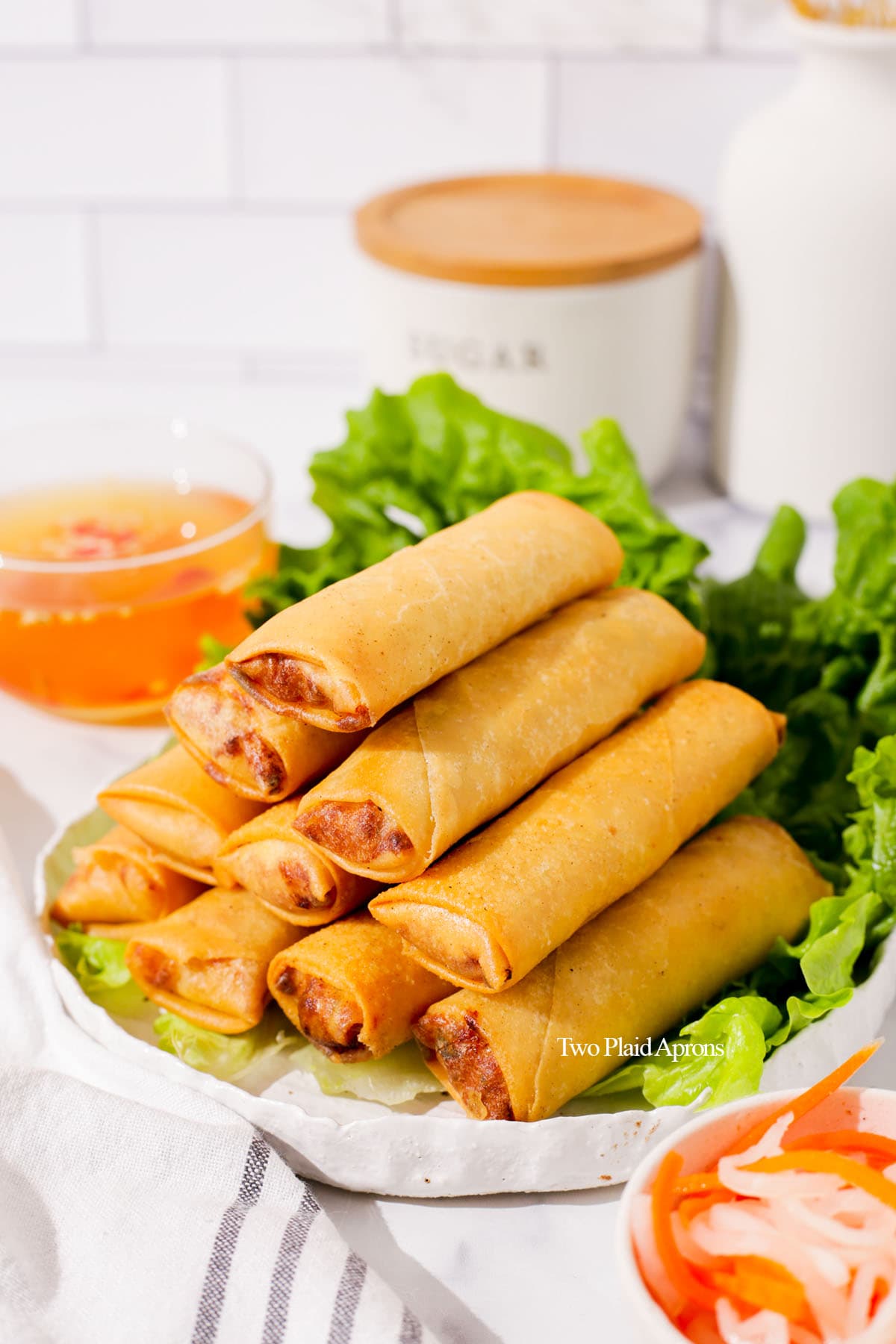
Chả giò is one of my absolute favorite Vietnamese appetizers! They're Vietnamese egg rolls, sometimes known as Vietnamese fried spring rolls, and they are just delicious!
They are golden brown a crispy on the outside and the filling is just so flavorful, I can honestly just eat them on their own! But you've got to try wrapping them in a lettuce leaf with some Vietnamese pickled carrots and radish. The crispy fried egg roll with some refreshing crunch from the lettuce and pickles is amazing!
If you prefer a some Vietnamese fresh spring rolls, try our tofu spring roll recipe. It's refreshing and easy to make. Perfect for the summer!
Jump to:
Ingredients
Please scroll down to the recipe card for the ingredient quantities!
For the filling:
- Ground pork - The main protein of Vietnamese egg rolls. We recommend ground pork with about 20 to 30 percent fat. This will make your egg rolls more flavorful and more fragrant.
- Shrimps - Shrimp helps to supplement the flavor and texture of the egg roll filling. You can use shrimps that are already deveined and peeled for convenience. If you prefer to not use shrimp, you can substitute with more ground pork instead.
- Cellophane noodles - Also known as bean thread noodles. They are clear and made of water and starch, usually mung bean starch. The noodles adds some bounce and snap to the filling.
- Wood ear mushrooms - Also known as black fungus and cloud ear mushroom. Wood ear mushroom adds a nice, crunchy texture to the chả giò along with some contrasting color, just like in our hot and sour soup.

- Carrot - Mostly for adding color and sweetness to the egg roll filling.
- Taro - A classic ingredient used to make Vietnamese egg rolls. You can find it at most Asian markets either vacuum packed or with skin on. If you can't find taro, jicama is a good substitute. Just make sure to squeeze out some excess moisture from the jicama.
- Yellow onion - Onion gives the egg roll filing so much flavor and makes it extra aromatic. You can also use shallots instead of onion.
- Garlic - To give the filling more flavor. Fresh garlic is highly recommended.
- Egg - To bind the fillings together.
- Fish sauce - You have to use some fish sauce to make chả giò taste like chả giò! It gives the filling lots of umami and seasons the filling.
- Salt and sugar - Just a little salt and sugar to make sure the filling is not bland.
- Chicken bouillon powder - We highly recommend using some chicken bouillon powder to add another layer of umami. If you prefer to make it without, substitute with a generous pinch of salt.
- Black pepper - To give the filling a slight peppery kick.
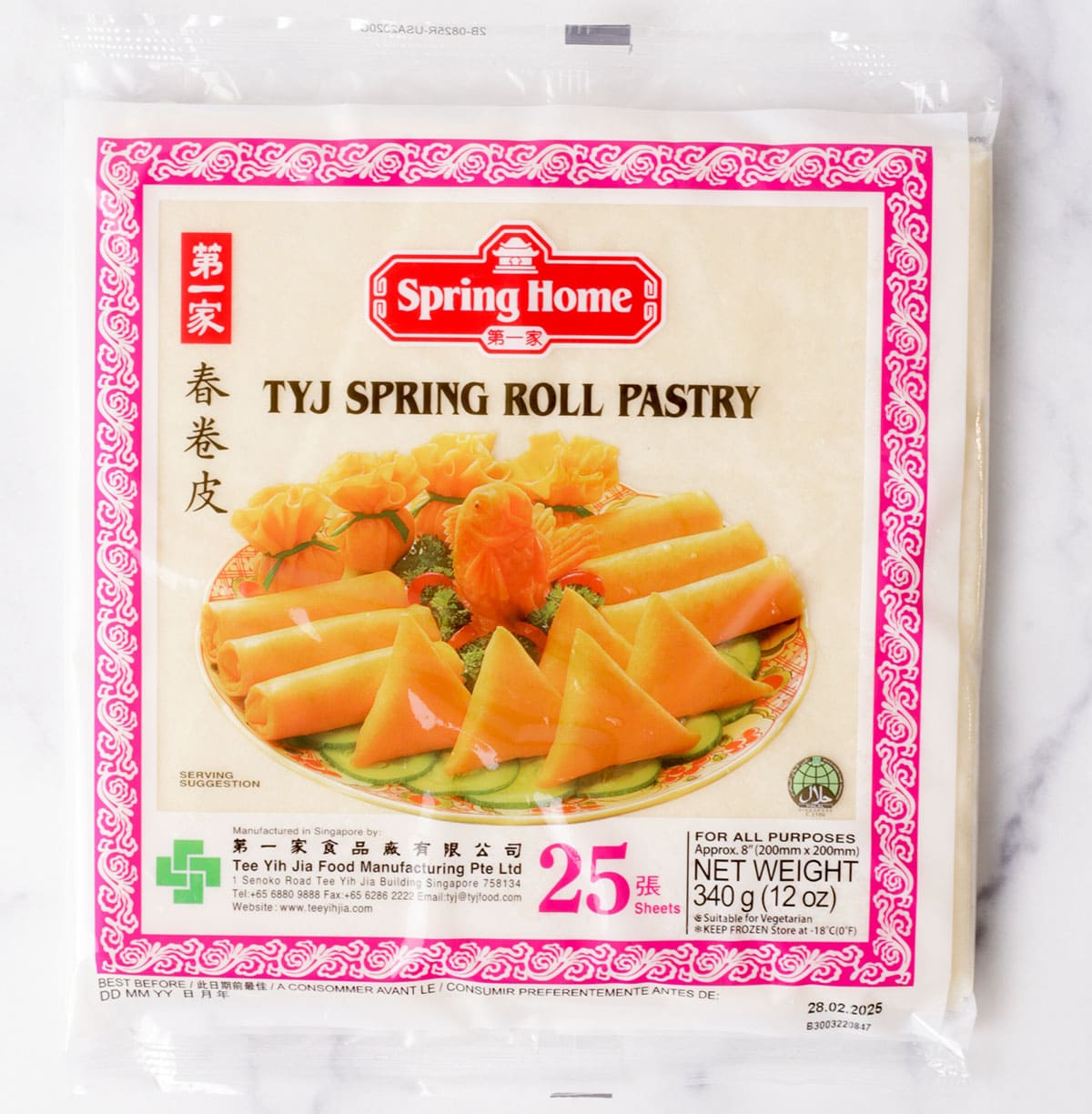
For the rest of the egg rolls:
- Spring roll pastry/ egg roll wrappers - We like to use TYJ spring roll pastry for Vietnamese egg roll. It's much crispier and keeps the egg roll crispy longer than rice paper. We recommend the wrapper that is about 8 by 8 inches. They usually come in a pack of 25 or 50.
- Oil (for frying)
- Cornstarch slurry - This is to help seal the egg rolls. You can easily make it by mixing water and cornstarch and either cooking it on the stovetop of in the microwave.
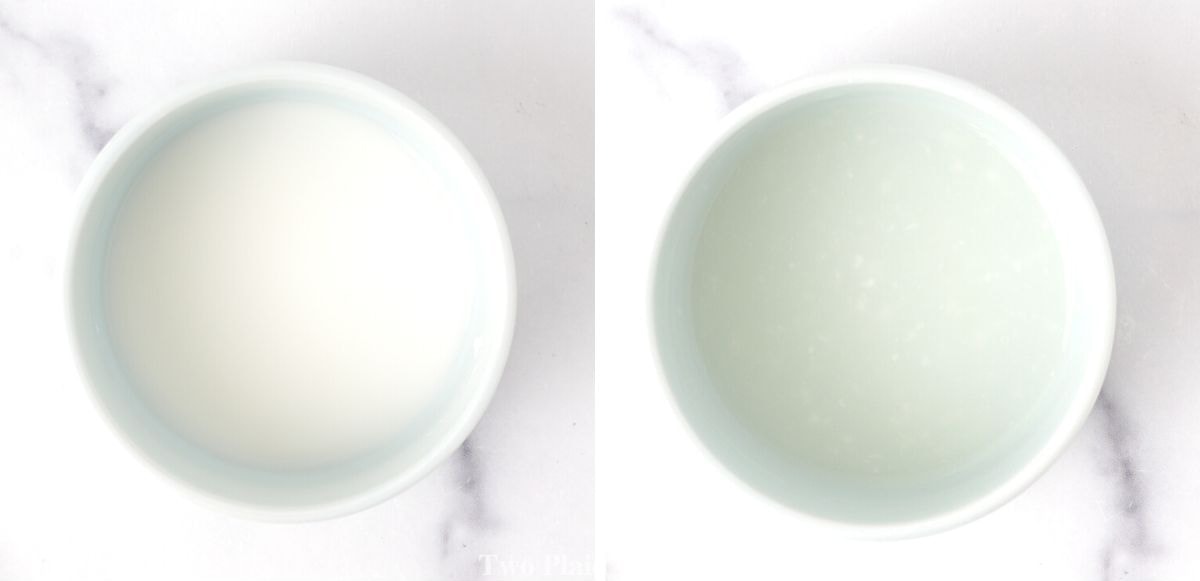
How to make chả giò
Make the filling:
1. Rehydrate the cellophane noodles and dry wood ear mushrooms by soaking each in a heatproof bowl with hot water for about 10 minutes. Make sure they are completely submerged.
🌟 Pro tip: You can save time by soaking the noodles and wood ear mushrooms first, while you prepare the rest of the ingredients for the filling.
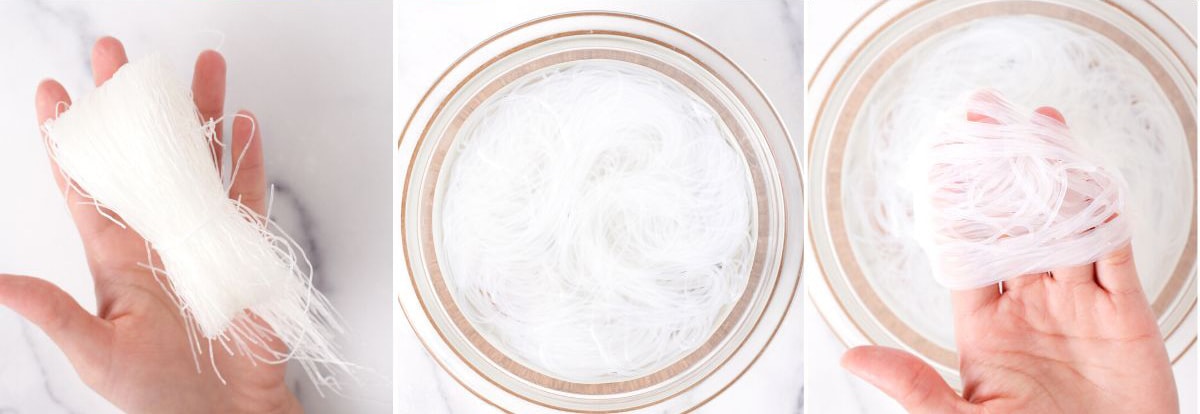
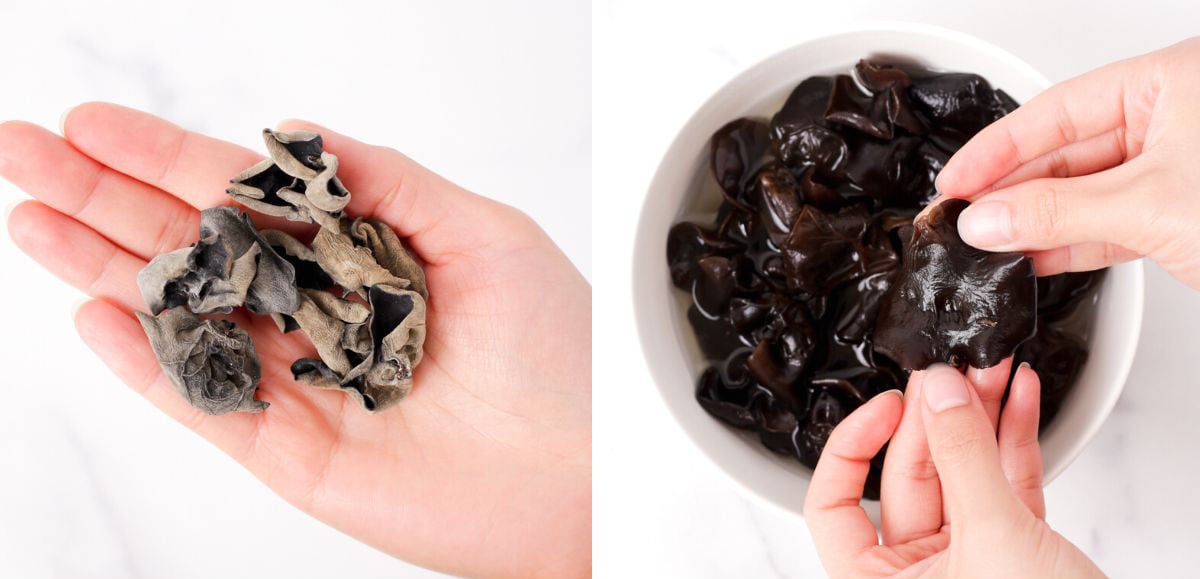
2. Once the noodles and wood ear mushrooms are rehydrated, drain them well. Cut the cellophane noodles into ½ to 1 inch pieces. Finely chop the rehydrated wood ear mushrooms.
3. In a large mixing bowl, add all the ingredients for the filling and mix until everything is evenly combined. Set aside.
🌟Pro tip: Take a small amount, about 1 tablespoon, of the filling and flatten it. Sear it in a pan over medium heat until cooked and taste it. You can then adjust the seasoning with more to your preference. Do note that the filling shouldn't be super seasoned since it's usually enjoyed with some dipping sauce.

How to roll the egg rolls:
1. On a clean work surface, lay down a sheet of the egg roll wrapper like a diamond.
2. Place about 2 tablespoons of filling on the wrapper, about 2 to 3 inches from the bottom. Pinch and spread the filling into an even, thin log, about 3 inches long. Make sure the ends of the filling do not protrude past the little triangle made with the wrapper. This will ensure that the filling is locked in.
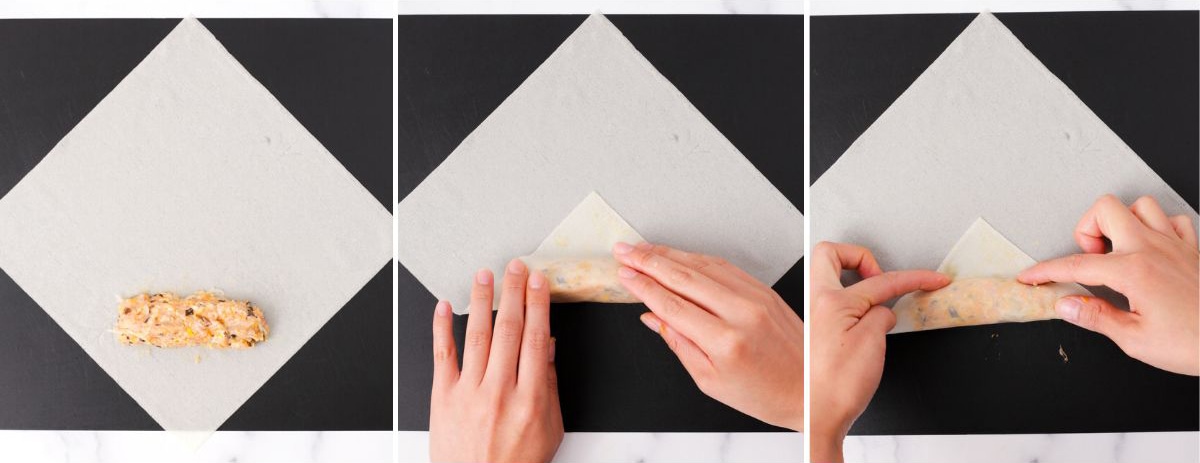
3. Fold bottom of the wrapper over the filling, tuck it tight, then fold the sides of the wrapper over it.
4. Evenly smear some prepared cornstarch slurry at the top corner of the wrapper and roll the egg roll upwards to seal. Repeat with the remaining filling and wrappers.
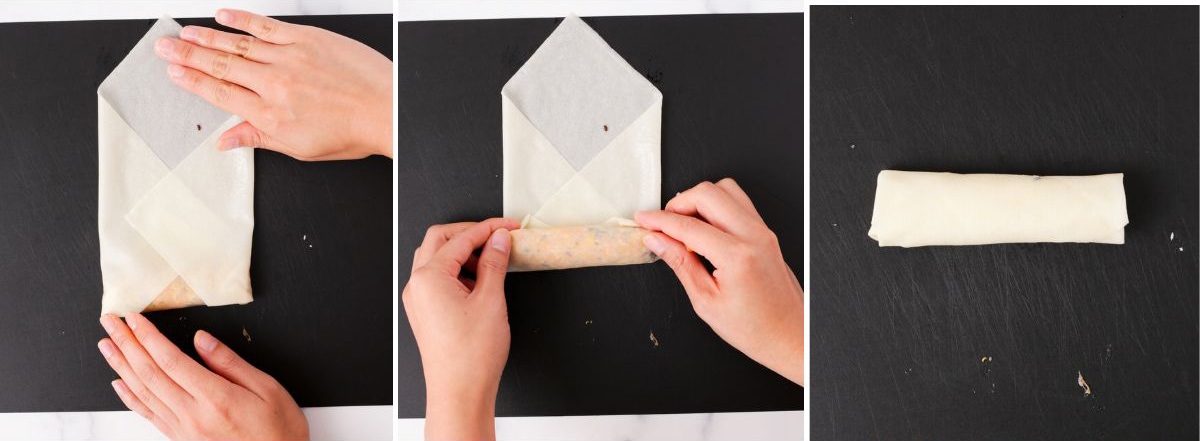
Fry the egg rolls:
1. In a heavy bottom pot or fryer, heat the oil to 350°F and prepare a plate or sheet pan lined with paper towels or a cooling rack.
2. Add as many egg rolls to the oil as possible, while keeping them all covered. Maintain the oil between 350°F and 375°F and fry the egg rolls for about 10 minutes, until the egg rolls are golden brown.
3. Remove the egg rolls from the oil and let them drain on the prepared plate/sheet pan. Repeat with remaining egg rolls.
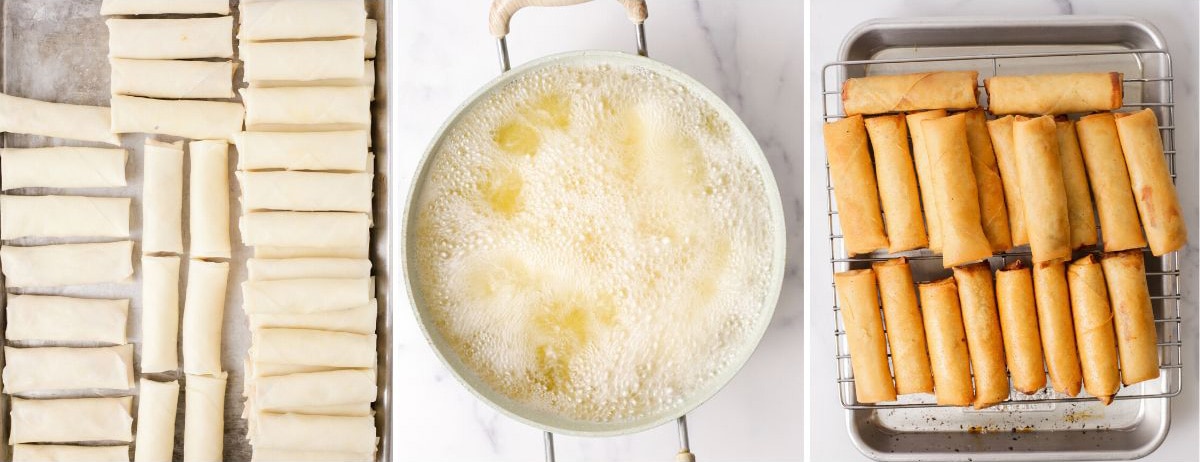
Air fryer method
If you prefer to cook the egg rolls with less oil, you can air fry them. Although, these Vietnamese egg rolls do taste better fried.
To air fry the Vietnamese egg rolls, first generously brush or spray all sides of the egg rolls with some high smoke point, neutral oil. Place them in the air fryer basket in one single layer with some gap between each. Air fry the egg rolls at 350°F for about 10 to 15 minutes, or until golden brown. Flip the egg rolls half way through cooking.
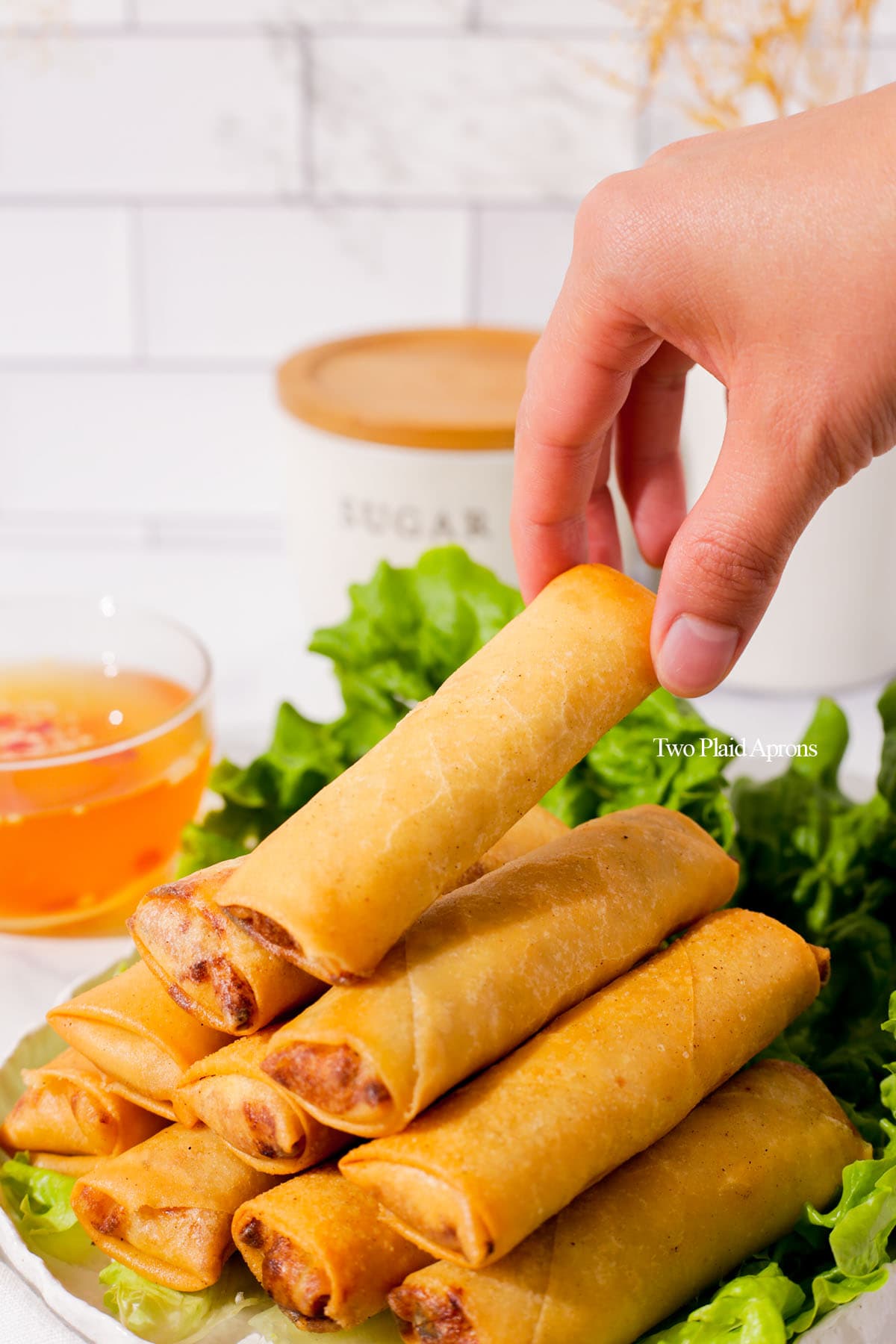
Recipe tips
- Drain the cellophane noodles and wood ear mushrooms well. Excess moisture in the filling can tear the egg roll wrapper.
- Don't pack too much filling. Having too much filling runs the risk of the filling being undercooked while the outside gets overcooked. If you want more filling, use the large size egg roll wrappers.
- Roll the egg rolls tight. This ensures that the filling doesn't leak out and the oil doesn't leak into the egg rolls.
- Maintain the frying temperature between around 350F. If the oil temperature is too high, the filling will not get cooked through and the wrapper may burn. Too low temperature could cause fine filling particles to seep out of the wrappers, making your oil dirty faster and with sediments.
What to serve with Vietnamese egg roll
Chả giò is amazing on its own or in a bowl of Bún thịt nướng! But if you're serving it as an appetizer, try these Vietnamese egg rolls with:
- Nước chấm (Vietnamese dipping sauce)
- Đồ chua (Vietnamese pickled carrots and daikon)
- Green leave lettuce or your preferred lettuce
- Mint
- Perilla leaves
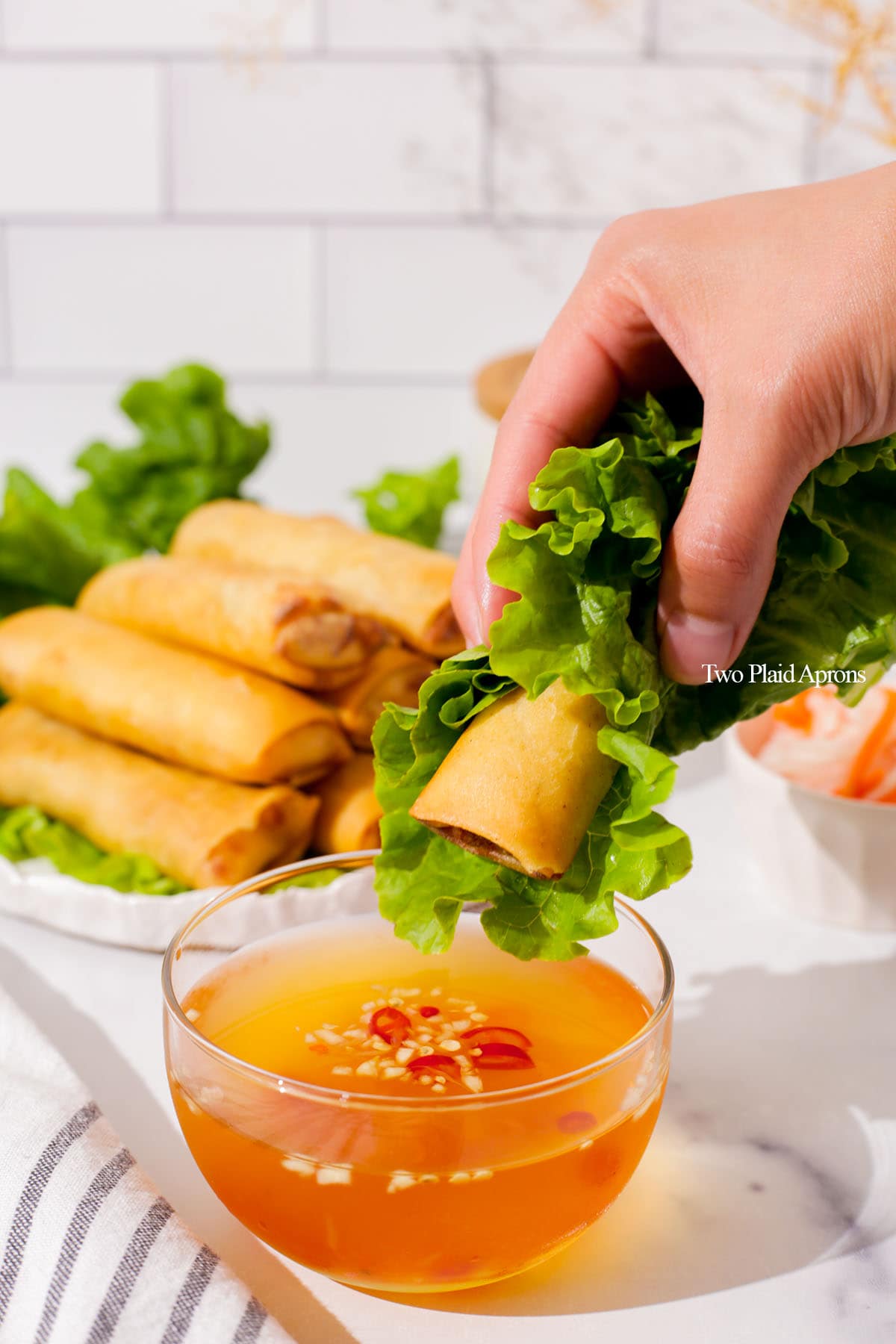
Storage
If you have leftover egg rolls, just let them cool completely before storing them in airtight containers for up to 3 to 4 days.
Uncooked Vietnamese egg rolls also freeze really well. So you can make a bunch and freeze them for later! Just store them in freezer bags or freezer safe airtight containers. They will last up to 3 months. When ready to fry, DO NOT defrost. Fry them frozen for about an extra 5 minutes.
Reheating
You can reheat leftover fried egg rolls in the oven or with an air fryer. Bake in the oven at 350°F or in the air fryer at 325°F for about 5 to 10 minutes, until warmed through. Do note that the egg rolls will not be as crispy reheated.
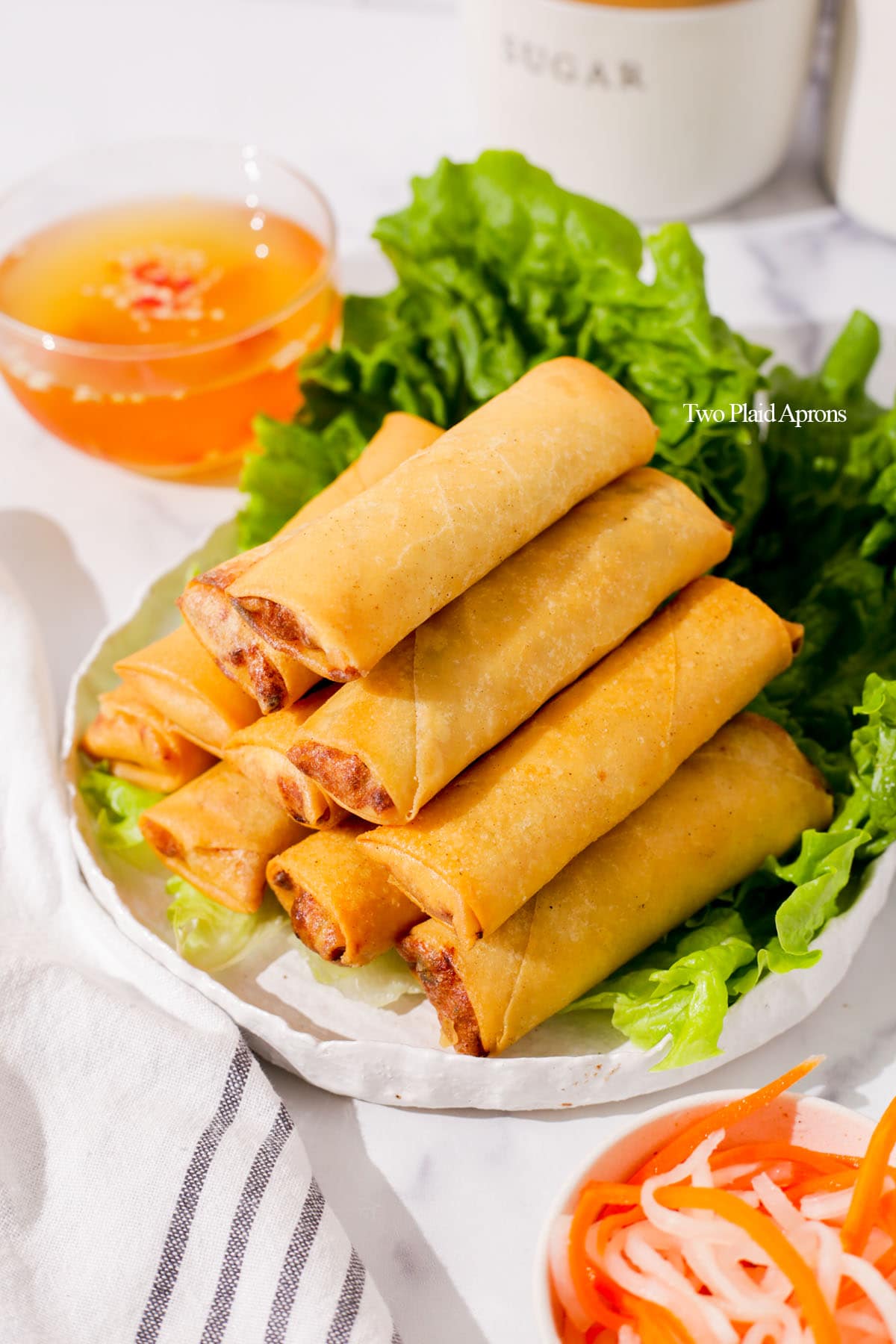
What to do with leftover oil
Leftover oil can be reused for cooking or more frying. Transfer the leftover oil into a heatproof bowl, jar, or container. Let the oil cool completely, then cover with plastic wrap or a lid. If you're uncomfortable with handling hot oil, set the oil aside to cool first!
If you plan on reusing the oil again, make sure to strain it through a fine mesh strainer or a couple layers or cheesecloth to remove any debris. Keep the oil in a cool, dark place and use within a couple of weeks.
If you're disposing oil, pour it into a jar or a container that can be sealed. Dispose of it in your trashcan. DO NOT pour it down your drain! It may damage your pipes and also cause damage to the environment!
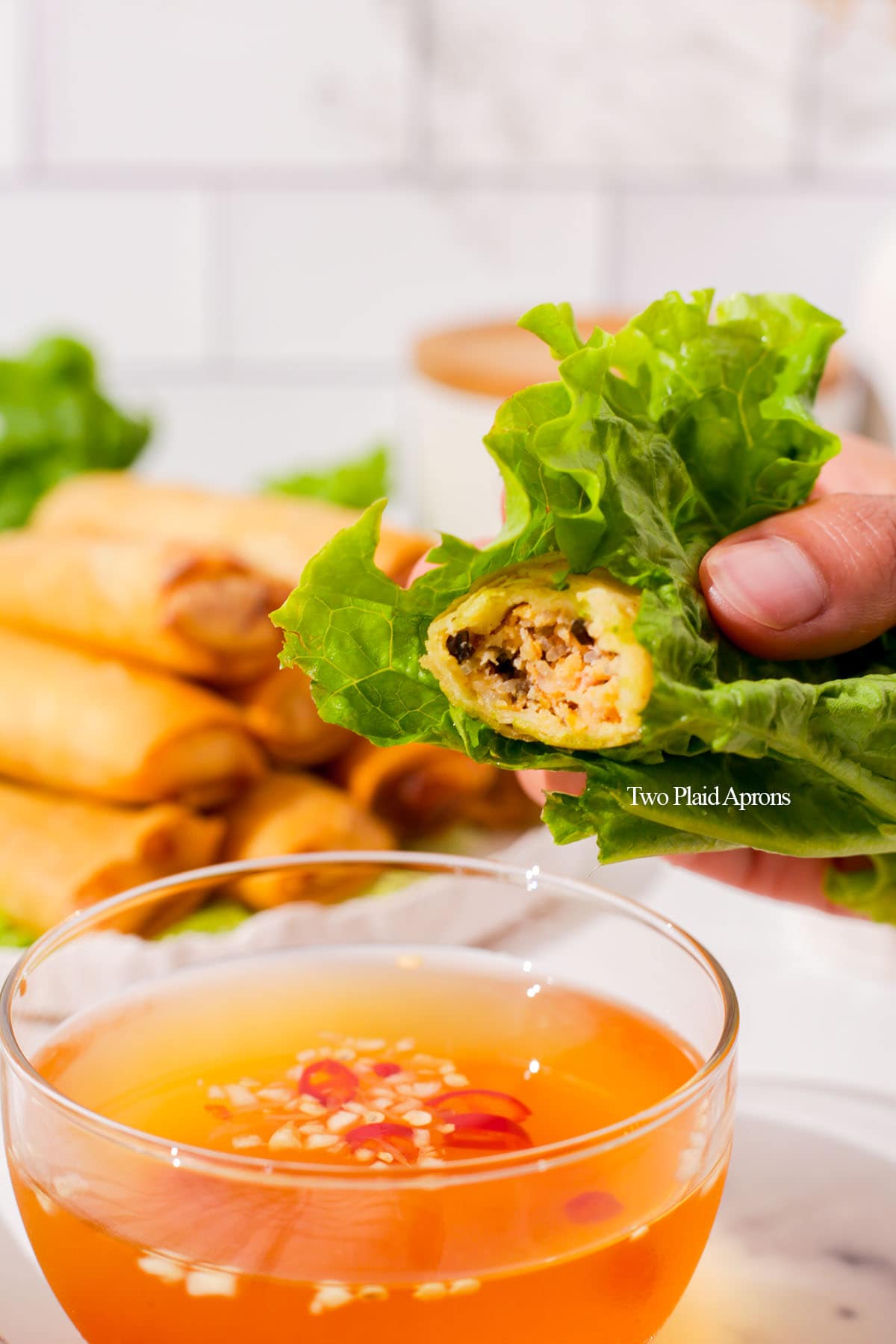
FAQ
They are the same thing! Chả giò is simply the term used in the south, and nem rán is the term used in the north for fried spring rolls/egg rolls.
Yes! Please read more about air frying the egg rolls in the post above. Do note that, air frying produce pretty good egg rolls, but it's not as good as frying.
That means your oil temperature is most likely too low. You'll see some sediments in the oil after frying, but it shouldn't be a lot. If your oil is too low, fine particles of the filling tends to seep out fo the wrapper.
The clear strands are cellophane noodles, also known as bean thread noodles. The noodles are made of water and starch, usually mung bean starch. So, they're really bouncy and a really nice snap to them.
If you’ve made this recipe or any recipes from our blog, please tag us on Instagram using #twoplaidaprons! You can also tag us in your Instagram stories using @two_plaid_aprons. We would love to see your creations! It absolutely makes our day! 🥰
📖 Recipe
Vietnamese Egg Roll (Chả Giò)
Ingredients
For the filling:
- 1 pound ground pork
- ½ pound shrimps peeled, deveined, and finely chopped
- 2 ounces cellophane noodles also known as bean thread noodles (usually 1 bundle)
- ¼ cup dry wood ear mushroom
- 1 cup carrot peeled and finely grated
- 1 cup taro peeled and finely grated
- ½ medium yellow onion finely chopped (or 2-3 shallots)
- 1 tablespoon garlic minced (about 2-3 cloves)
- 1 large egg
- 1 tablespoon fish sauce
- 2 teaspoons granulated sugar
- 2 teaspoon chicken bouillon powder
- 1 teaspooon Kosher salt fine salt is okay too
- 1 teaspoon cracked black pepper
For the rest of the egg rolls:
- 40-50 sheets 8 inch spring roll pastry *please see post for photo reference*
- ¼ cup water
- 1 tablespoon cornstarch
- Oil for frying
Instructions
Make the filling:
- Place the cellophane noodles and dry wood ear mushrooms each into a heatproof bowl and rehydrate with hot water, about 10 minutes. Make sure they are completely submerged.
- Once the noodles and wood ear mushrooms are rehydrated, drain them well. Cut the cellophane noodles into ½ to 1 inch pieces. Finely chop the rehydrated wood ear mushrooms.
- In a large mixing bowl, add all the ingredients and mix until everything is evenly combined. Set aside.*You can also take about 1 tablespoon of filling and cook it in a pan over medium heat to taste the filling. Then, you can adjust the seasonings if needed. Do note that the egg rolls do get served with dipping sauce, so no need to make the filing super seasoned.*
Make the cornstarch slurry:
- Mix together the ¼ cup of water and 2 teaspoon cornstarch until well combined. Either heat the slurry in a pan until thickened or in the microwave for about 15 seconds.
Make the egg rolls:
- On a clean work surface, lay a sheet of the egg roll wrapper like a diamond. Place about 2 tablespoons of filling on the wrapper, about 2 to 3 inches from the bottom. Pinch and spread the filling into an even, thin log, about 3 inches long.
- Fold bottom of the wrapper over the filling, tuck it tight, then fold the sides of the wrapper over it. Evenly smear some prepared cornstarch slurry at the top corner of the wrapper and roll the egg roll upwards to seal. Repeat with the remaining filling and wrappers.
Fry the egg rolls:
- In a heavy bottom pot or fryer, heat the oil to 350°F and prepare a plate or sheet pan lined with paper towels or a cooling rack.
- Add as many egg rolls as possible while keeping them all submerged. Maintain the oil between 350°F and 375°F and fry the egg rolls for about 10 minutes until the egg rolls are golden brown.
- Remove the egg rolls from the oil and let them drain on the prepared plate/sheet pan. Repeat with remaining egg rolls.
Serve:
- Enjoy the egg rolls on their own, with Vietnamese dipping sauce, lettuce, herbs, and/or Vietnamese pickled carrots and radish!
Notes
- Oil temperature - It is very important that you maintain the oil temperature around and between 350°F to 375°F. If the oil is too low, the fine particles of the filling tends to leak into the oil. Too hot, and the filling will not get cooked through before the wrapper gets too dark.
- Food process - If you prefer, you can finely chop the onion and wood ear mushrooms (separately) using a food processor. We find hand cutting everything gives better texture, but food processor would definitely reduce the prep time a little.
- Finely grate the taro - We highly recommend grating the taro using the the side of the grater with the smaller holes. This ensures the taro gets cooked throughly.
- Wear gloves - When handling raw taro, we recommend wearing gloves, especially if you have sensitive skin. Raw taro can make your hand itchy and dry.



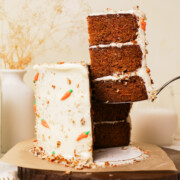
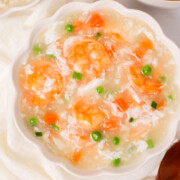
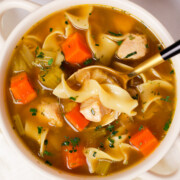
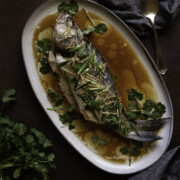
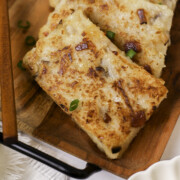
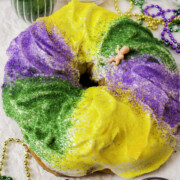
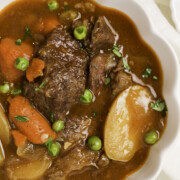

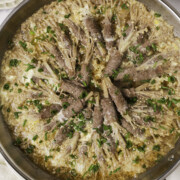
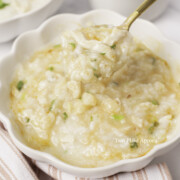
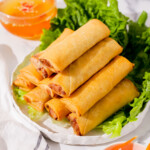




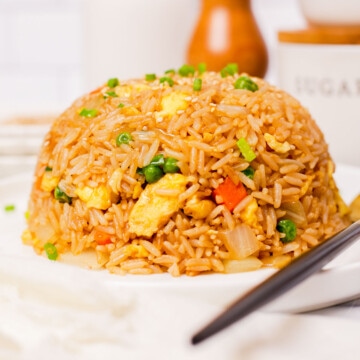
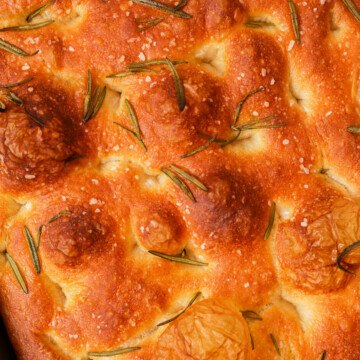
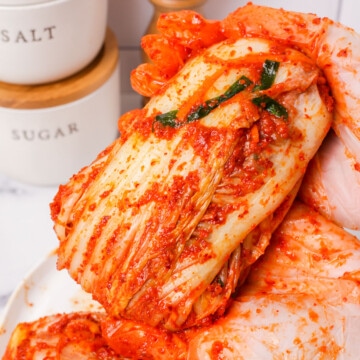
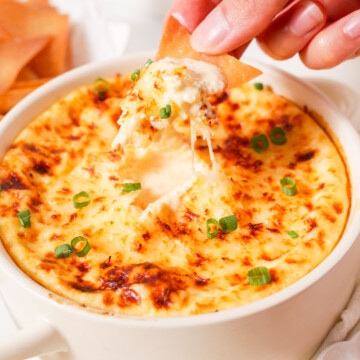
Abby says
Amazing! Great pictures and instructions! Thanks!!
Mei says
Thank you, Abby! So glad our photos and instructions are helpful =)
Mei ❤️